- Home
- Dean Koontz
Writing Popular Fiction Page 13
Writing Popular Fiction Read online
Page 13
Westerns, like war stories, usually paint good and evil in fairly distinct blacks and whites, at least to begin with. But one technique of characterization, used by most Western writers and visible in the vast majority of Western novels, saves the genre from the war story's simplicity and gives it verisimilitude. Most Westerns begin with a carefully delineated hero and an equally obvious villain. The protagonist seems 100% good, while the antagonist is 100% bad. However, in the course of the story's development, the hero becomes less admirable than he was at the outset, while the villain grows gradually more sympathetic and less starkly evil than he seemed in the beginning. By the climax and conclusion of the novel, the reader's main concern is still centered on the hero, but he has accepted good and evil in both antagonist and protagonist. The overwhelming thematic point of the Western is: The good man cannot remain perfectly good in a world full of evil; some of it will have to rub off on him if he is going to survive. Naturally, if that philosophical point is to be accepted, its reverse must also be true: The bad man cannot remain perfectly bad in a world that contains some good; a little of it will have to rub off on him if he is to survive. This character development resembles the changes wrought on a Gothic heroine as she passes through a story, though here the author's approach and tone must be a good bit more profound than it is in the Gothic-romance.
Brian Garfield's Gun Down uses this Western theme and style of characterization. Sam Burgade, a retired lawman, is shown in the opening sequences of the book as a man of virtue and heroism. The antagonist, Zach Provo, whom Burgade put behind prison bars, is clearly a psychopath set upon obtaining revenge. Provo escapes from prison, kidnaps Burgade's virginal young daughter, Susan, and leads the retired lawman deep into the wild country where he intends to kill him. Susan is eventually raped, by several of Provo's murderous allies, in full sight of her father, but is at least rescued from death. By the end of the novel, we have begun to sympathize somewhat with Zach Prove, because we learn that Sam Burgade accidentally shot and killed the antagonist's wife the first time he arrested him. Provo, who loved her quite a bit, has never really recovered from the loss. Burgade, on the other hand, seems to have suffered little guilt for Provo's wife's death and is too quick to write it off as being Provo's fault for having placed her in the middle of a confrontation with the law. Also, by the end, we see that Sam Burgade is a craftier, more deadly man than any of the outlaws who have taken his daughter: he kills seven of the eight and saves his daughter's life. We still prefer him to Provo and look upon him as an admirable, good man, but we no longer see him as all white and his enemies as all black.
Perhaps the major reason why this characterization gimmick has become more associated with the Western than any other genre lies in the nature of the background against which a Western is set. Most Western novels take place in the years between 1865 and 1899, when there was little organized law enforcement and when local and territorial law was often as corrupt as the outlaws it pretended to be interested in apprehending. Rich men owned the large ranches; they viciously destroyed competition and killed and financially ruined other ranchers and sheep herders. Rich men owned most of the important mines and paid little heed to prior claims staked by powerless individuals. Whole towns were often run by companies or by one or two men from whom all the money in the area generated. This was rarely a time and a place for individual enterprise unless the individual was willing to take enormous risks and was willing to fight for his own. In such a land, the outlaw could easily be elevated into the role of a folk hero. He thumbed his nose at the handful of men in power, stole from them, and fought his way free of all pursuit. To the average man of that time, the outlaw was not just a villain, a law breaker, and a thief-but something of a symbol of each man's soul set free. Unless his only crime was murder, and unless his victims were helpless women or children, no one could really view him without some favor.
Although the modern reader lives in a more civilized society, he too often feels put upon by forces too large for him to deal with-big business, large institutions, the government itself-and he can't help but sympathize a little with the man who makes his way outside traditional bounds of permissible behavior. That is not to say that he will cheer the antagonist and boo the hero. Instead, he will expect well-rounded portraits of both of them.
Just as science fiction and suspense can be broken down into a limited number of plot types, so can the Western. There are basically seven Western plot types:
THE LAWMAN STORY
In this type of Western, the hero is a sheriff, marshal, or deputy, and his antagonist is an outlaw of one sort or another. The hero is always dedicated, but in a modern Western he should be motivated by more than a sense of duty, pride in his badge, and his monthly paycheck. Badge of Honor by Lee E. Wells is a good example of the type.
THE OUTLAW STORY
Here, your hero is an outlaw, and he must be treated with as much sympathy as you would accord the lawman. His crimes rarely include murder, and never include unprovoked murder. He is most often either a highwayman or a bank robber, forced into a life of crime by the social conditions of his day (which we have discussed above) or by the Civil War and the changes it brought to his life. (The Civil War is the factor which influenced the hero of Lee Hoffman's Wild Riders to become an outlaw.) You should either logically reform your hero by the end of the book, or you should see that he escapes whatever forces of law pursue him and lives to rob again. As with the suspense novel using a criminal hero, don't construct a sympathetic outlaw only to hand him defeat in the end because "crime does not pay."
THE CATTLE RANGE STORY
These are stories set on ranches, on long cattle drives, stories about sheep herders battling cattlemen, cattlemen battling farmers, cattlemen battling each other, stories about droughts, rustlers, and other cattle range problems. You have a wide choice of heroes and villains, though, again, they must be realistically drawn. Good examples of this type of Western are Todhunter Ballard's Blizzard Range, and Louis L'Amour's Killoe and North to the Rails.
THE REVENGE STORY
There are three common heroes for this type of plot: the outlaw unjustly punished by a crooked or overzealous marshal; the good law-abiding citizen wronged by ruthless outlaws; and the last surviving member of a family murdered by Indians or bandits. In every case, the hero vows revenge and sets out to take it. Nothing will stand in his way, and he must eventually deliver the antagonist to retribution. Don't forget that you must strengthen the hero's motivations whenever possible and not propel him through a long chase simply for revenge; he must have secondary motives. A good novel of this type is Wayne D. Overholser's The Long Trail North, but without question the greatest Western revenge novel written to date is Zane Grey's Riders of the Purple Sage.
THE OPENING-THE-WILD-WEST STORY
This kind of story includes those plots dealing with the journey of a wagon train across the continent, the construction of the railroad, telegraph line, toll road, stagecoach line, pony express route, or similar endeavour. Your hero may be the boss of the wagon train or of the construction company; opposed by reactionaries, ranchers who want more money for the use of their land, Indians, and outlaws in equal numbers. Or he may be a local rancher, a small businessman whose property is being condemned or taken away from him without proper compensation: in this case, the opponents would be those who want to force the construction ahead no matter who gets hurt. A warning: This second type of hero must have a personal stake in fighting the new construction; he may not oppose it simply for spite or because he doesn't want to see Eastern progress cut across his beloved wilderness. Few readers can sympathize with a hero, good or bad, who is against progress of any kind; and in those days, there was no ecological crisis to justify such a viewpoint. Luke Short's The Outrider is a good novel dealing with an ordinary citizen up against the corruption of mining and railroad interests.
THE BATTLE OF TITANS STORY
These novels always concern a conflict between two enorm
ous ranches or economical concerns of the Old West. One wealthy family is pitted against another in a fight for water sources, mineral claims, fencing limits, or because of mutual rustling. Your hero will be a member of and usually the head of the more virtuous family and will always triumph. Everything in this kind of Western must be on a grand scale, set against a panorama of Western landscape and history.
THE CAVALRY AND INDIAN STORY
The new writer is often tempted to do this as Ouster's Last Stand, using Indians as immoral savages who harass and torture the good cavalry men. At one time, indeed until quite recently, this was permissible. Today, the average reader has read Bury My Heart at Wounded Knee by Dee Brown (by far the best research work on the horrible war against the American Indian) or its equivalent and is aware of the true relationship between the cavalry and the Indian. More often than not, the cavalry was the persecutor, the Indian the innocent victim. Before attempting to write a Cavalry and Indian story, you must do intense research in order to understand the true situation of the American Indian in the Old West.
No matter which Western plot you employ, you must research customs, slang, dress, and day-to-day chores before putting Word One down on paper. A Western is an historical novel, and it must be true to its period of genesis. (Besides adult and juvenile books on American history and Western history, one excellent reference is Western Words: A Dictionary of the American West by Ramon F. Adams. Published by the University of Oklahoma Press, it is a rich source of cowboy vernacular.)
We have already mentioned a few of the taboos a modern Western writer must be aware of, but let's list them in more orderly style:
The hero who cleans up a town because he believes in "justice," and for no other reason, is taboo. He must be a sympathetic man with his own problems, fears, hopes, and dreams and with a sound personal reason for everything he does.
Racial Westerns in which the Indians or the Mexicans are portrayed as mindless savages are taboo. The modern reader demands authenticity and honest treatment of all your characters.
No modern Western author can succeed when writing stories based on sloppy research or on no research at all.
The story of the lone cowpoke who rides onto a new ranch beset by troubles, reveals that the foreman is a crook, and wins the rancher's daughter, is taboo. This is such a cliché that the regular Western reader would flinch the moment he recognized it.
The story of the shoot-out on Main Street, in which the opponents are out to prove who's the best man, or in which one of them is determined to prove his manhood in a sort of rite of passage, is taboo. It is cliché unless you can give the plot a very original twist.
Misinformation about handguns of the 1865-1899 period is taboo. Regular Western readers will know how many shots were carried in a gun you just described, and they'll know what its capabilities were. If they catch you in a fundamental error, they'll not believe anything in the rest of the book and will, justifiably, put it down without finishing it.
A sympathetic outlaw who loses in the end to prove that "crime doesn't pay" is taboo.
The hero who stands in the way of progress-railroad, telegraph, stagecoach line-merely to preserve the untainted West, comes off as an idiot and is taboo. There was no ecological crisis back then; no industry was contributing to an unnecessary and dangerous pollution of the land.
Just a final note to assure the potential Western writer who is a woman that not all Westerns are written by men, though most publishers insist that women who write Westerns assume a male pen name or at least use only the initials of their first and middle names. Western by-lines you have seen, which are covers for women, include Lee Hoffman, B. M. Bower, Eli Colter, and Stewart Toland. Women often have a talent for research and a feel for historical periods that make them outstanding Western novelists.
CHAPTER SEVEN Erotica
Generally speaking, there are two kinds of erotic novels: the Big Sexy Novel and the Rough Sexy Novel. You can make a fortune on the first and little more than pocket money on the last. Big Sexy Novels are written by Harold Robbins, Jacqueline Susann, Henry Sutton, Morton Cooper, Rona Jaffe, and many others. Six figure incomes are a starting place in the Big Sexy Novel field, with million dollar rewards if you achieve the position of a Robbins or a Susann. Rough Sexy Novels are written by, among hundreds of others, Marcus Van Heller, Ann Griffin, Tor Kung, Peggy Swenson, Marco Vassi, and Jesse Taylor. Their financial rewards average between $1,000 and $3,000 a book, and they do not even receive the fringe benefits of national fame accorded the BigSN writer-to say nothing of the subsidiary rights a RoughSN novelist rarely ever profits from.
What, you may well ask, differentiates between a Big Sexy Novel and a Rough Sexy Novel? Most importantly, language. In a sane world, we might expect the dirtier, more arousing book to make the biggest money. In a land of sexual hypocrisy, however, the opposite is true. The BigSN contains at least one sex scene in every chapter, but describes the bedroom action in a "refined" way that is acceptable to a broad spectrum of American book buyers who can, because the crudest language does not appear, pretend they have no interest in the prurient passages of the work and are reading it for other reasons when, of course, the prurient passages are at least half of what they want to get out of the book. The RoughSN, on the other hand, pulls no punches, describing the bedroom scenes at greater length and in greater detail than the BigSN, letting the reader see them from every conceivable angle and character viewpoint, and employing any word no matter how "filthy" its connotation or denotation. Furthermore, the tone of the RoughSN is very straightforward, honest, and blatantly arousing, while the tone of the BigSN is coy, flirting with style and "meaning" while actually delivering a great deal of thinly disguised erotica.
In most categories, clarity of prose is important and overwriting is taboo. Not so in the Big Sexy Novel. Here, the writer often uses the over-written scene to pretend toward "literary content" or merely to avoid using earthier language that could describe the scene better and more directly. For example, the BigSN might contain something like this:
As Rita swelled towards her peak, she felt like the sea, the great, all-encompassing sea, the churning of dark waves, so that she was a mindless mass moving, moving everywhere and all at once. And she cried out, but softer than the sea when it cries against the rocks, more like the soft cry of water on sand, rolling, breaking, foaming, rocking up and down in liquid ecstasy, pulling back to build up and rush in again, exploding, shuddering…
Or the Big Sexy Novel might contain this sort of passage:
It was like a storm for Glenda. He entered her like lightning striking into the dark heart of the sky, and she was filled with a momentary light that faded but, in fading, promised to return in even more brilliant display. And, with that bolt enfolded by her dark night, the rolling clouds came, moving together, parting and then mingling again; and the thunder was their breath as they rolled together, achieving, at last, that greater flash of lightning and the wet release of storm water.
If you think these examples are humorous, you would do well to read some of the financially and critically accepted Big Sexy Novels to be sobered. None of what I've written here would be particularly out of place in D. H. Lawrence's Lady Chatterly's Lover or Henry Sutton's The Voyeur.
Of course, the strength of language permissible in the BigSN changes from year to year, and the potential BigSN author must read the latest works to know just how far he may go. Today, four-letter words appear on the average of two to four times on every page of the BigSN, and euphemisms for the parts of the body and the sex act are frequently supplemented by the vulgar tongue. But one thing that has never changed and will never change in the BigSN is the lack of the clinical descriptions of bodies and acts which are the life's blood of the Rough Sexy Novel. The BigSN reader is not interested in how the act is done so much as in the seduction leading to it: he wants to read about the lust more than the satisfaction, just as the suspense reader likes to anticipate more than witness the violent eve
nt around which a suspense novel is built.
Another appeal of the BigSN, aside from its artificial literary value, is its gossipy quality. Americans are great gossipers, especially about other people's sexual proclivities and adventures. Therefore, a BigSN will be written around one of five main plots:
BEHIND THE SCENES IN SUBURBIA
The author attempts to show that moral corruption and sexual permissiveness are the norm in middle-class suburbs.
The book is full of cheating wives, cheating husbands, wife-swappers, and promiscuous teenagers. Examples of the form are John Updike's Couples and Edmund Schiddel's The Devil in Bucks County.
BEHIND THE SCENES OF THE JET SET
Harold Bobbins' The Adventurers and Burt Hirschfeld's Fire Island are examples of the form. The author shows us the moral corruption and sexual permissiveness in the world of exotic resorts and swinging young people.
BEHIND THE SCENES IN HOLLYWOOD
The author paints the "inside" story of moral corruption and sexual permissiveness among stars, starlets, producers, directors, screen writers, and other motion picture glamour types. Henry Sutton's The Exhibitionist and Jacqueline Susann's Valley of the Dolls are "classics" of the form. Harold Robbins' The Inheritors is another, interesting for the strength of its language which is harsher than in most Big Sexy Novels.
BEHIND THE SCENES OF A GLAMOROUS PROFESSION
Here, the author takes the reader for an "inside" look at the moral corruption and sexual permissiveness in a profession the general public looks upon as exotic or secretive: publishing (Edmund Schiddel's Good Time Coming), international finance (The Richest Man in the World by "J.P."), prize fighting (Crown by Francis Pollini), high fashion designing and modeling (The Rag Dolls by Simon Cooper), medicine, law, Madison Avenue advertising agencies and hotel management.

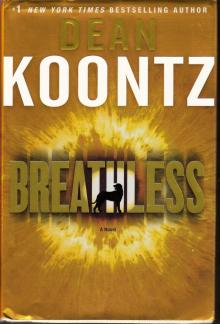 Breathless
Breathless Lightning
Lightning The Taking
The Taking The Door to December
The Door to December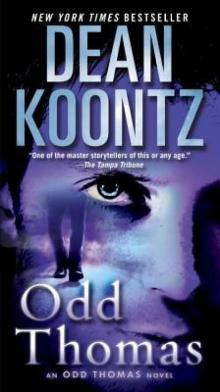 Odd Thomas
Odd Thomas Midnight
Midnight Whispers
Whispers Odd Interlude #2
Odd Interlude #2 The Mask
The Mask Watchers
Watchers By the Light of the Moon
By the Light of the Moon Night Chills
Night Chills Brother Odd
Brother Odd False Memory
False Memory The Darkest Evening of the Year
The Darkest Evening of the Year Life Expectancy
Life Expectancy The Good Guy
The Good Guy Hideaway
Hideaway Innocence
Innocence Your Heart Belongs to Me
Your Heart Belongs to Me Forever Odd
Forever Odd Intensity
Intensity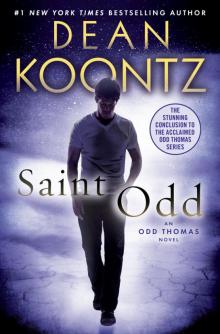 Saint Odd
Saint Odd Dragon Tears
Dragon Tears The Husband
The Husband Final Hour
Final Hour Demon Seed
Demon Seed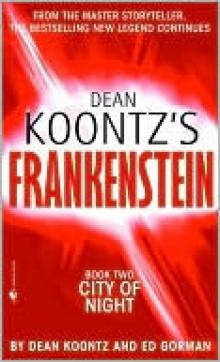 City of Night
City of Night From the Corner of His Eye
From the Corner of His Eye A Big Little Life: A Memoir of a Joyful Dog
A Big Little Life: A Memoir of a Joyful Dog Seize the Night
Seize the Night Winter Moon
Winter Moon Strange Highways
Strange Highways The Silent Corner
The Silent Corner Twilight Eyes
Twilight Eyes Velocity
Velocity The Bad Place
The Bad Place Cold Fire
Cold Fire The Whispering Room
The Whispering Room Ricochet Joe
Ricochet Joe The Crooked Staircase
The Crooked Staircase Tick Tock
Tick Tock The Face
The Face Sole Survivor
Sole Survivor Strangers
Strangers Deeply Odd
Deeply Odd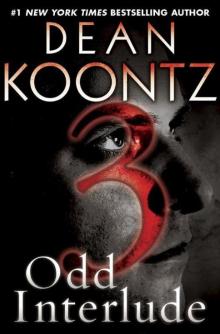 Odd Interlude #3
Odd Interlude #3 The Vision
The Vision Phantoms
Phantoms Prodigal Son
Prodigal Son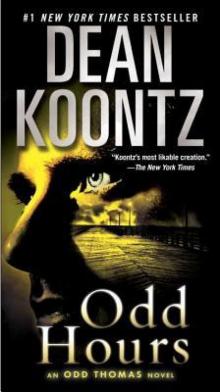 Odd Hours
Odd Hours Last Light
Last Light Fear Nothing
Fear Nothing Odd Interlude #1
Odd Interlude #1 One Door Away From Heaven
One Door Away From Heaven Koontz, Dean R. - Mr. Murder
Koontz, Dean R. - Mr. Murder The City
The City The Dead Town
The Dead Town The Voice of the Night
The Voice of the Night Dark Rivers of the Heart
Dark Rivers of the Heart The Key to Midnight
The Key to Midnight Lost Souls
Lost Souls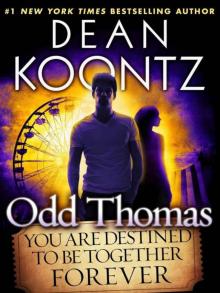 Odd Thomas: You Are Destined To Be Together Forever
Odd Thomas: You Are Destined To Be Together Forever Odd Apocalypse
Odd Apocalypse Icebound
Icebound The Book of Counted Sorrows
The Book of Counted Sorrows The Neighbor
The Neighbor Ashley Bell
Ashley Bell Santa's Twin
Santa's Twin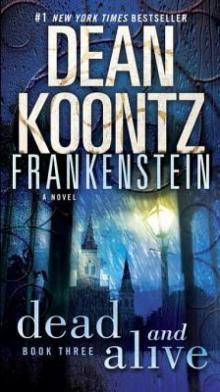 Dead and Alive
Dead and Alive The Eyes of Darkness
The Eyes of Darkness The Odd Thomas Series 4-Book Bundle
The Odd Thomas Series 4-Book Bundle Writing Popular Fiction
Writing Popular Fiction City of Night f-2
City of Night f-2 Dean Koontz's Frankenstein 4-Book Bundle
Dean Koontz's Frankenstein 4-Book Bundle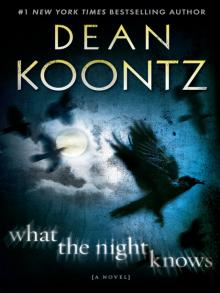 What the Night Knows: A Novel
What the Night Knows: A Novel Demon Child
Demon Child Starblood
Starblood Surrounded mt-2
Surrounded mt-2 Odd Interlude #3 (An Odd Thomas Story)
Odd Interlude #3 (An Odd Thomas Story)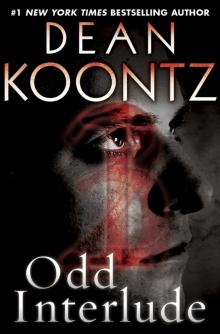 Odd Interlude
Odd Interlude The Odd Thomas Series 7-Book Bundle
The Odd Thomas Series 7-Book Bundle The City: A Novel
The City: A Novel Deeply Odd ot-7
Deeply Odd ot-7 Odd Interlude #1 (An Odd Thomas Story)
Odd Interlude #1 (An Odd Thomas Story) The House of Thunder
The House of Thunder Odd Interlude ot-5
Odd Interlude ot-5 Fear That Man
Fear That Man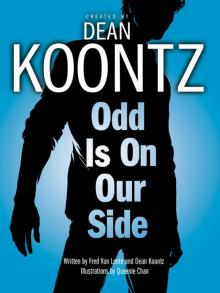 Odd Is on Our Side
Odd Is on Our Side Relentless
Relentless A Big Little Life
A Big Little Life Hanging On
Hanging On The Forbidden Door
The Forbidden Door Dragonfly
Dragonfly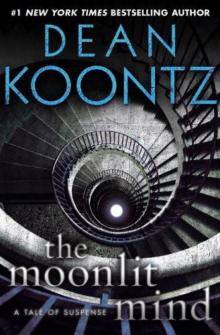 The Moonlit Mind: A Tale of Suspense
The Moonlit Mind: A Tale of Suspense Final Hour (Novella)
Final Hour (Novella) The Odd Thomas Series 4-Book Bundle: Odd Thomas, Forever Odd, Brother Odd, Odd Hours
The Odd Thomas Series 4-Book Bundle: Odd Thomas, Forever Odd, Brother Odd, Odd Hours Odd Interlude (Complete)
Odd Interlude (Complete)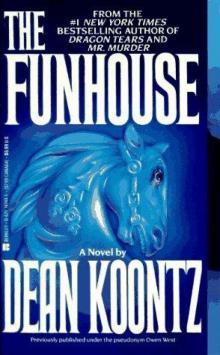 The Funhouse
The Funhouse 77 Shadow Street
77 Shadow Street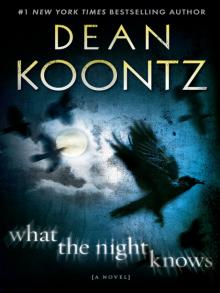 What the Night Knows
What the Night Knows Deeply Odd: An Odd Thomas Novel
Deeply Odd: An Odd Thomas Novel The Servants of Twilight
The Servants of Twilight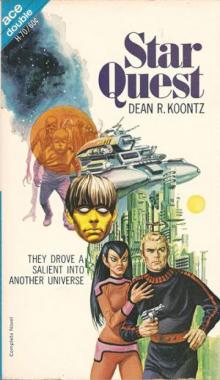 Star quest
Star quest Frankenstein Dead and Alive: A Novel
Frankenstein Dead and Alive: A Novel Chase
Chase Eyes of Darkness
Eyes of Darkness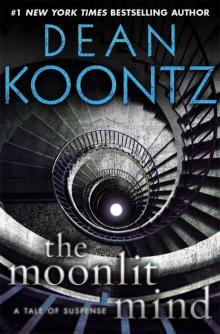 The Moonlit Mind: A Tale of Suspense (Kindle Single)
The Moonlit Mind: A Tale of Suspense (Kindle Single) Sussurri
Sussurri The Moonlit Mind (Novella)
The Moonlit Mind (Novella) Frankenstein: Lost Souls - A Novel
Frankenstein: Lost Souls - A Novel![Ricochet Joe [Kindle in Motion] (Kindle Single) Read online](http://i1.bookreadfree.com/i2/04/05/ricochet_joe_kindle_in_motion_kindle_single_preview.jpg) Ricochet Joe [Kindle in Motion] (Kindle Single)
Ricochet Joe [Kindle in Motion] (Kindle Single) Innocence: A Novel
Innocence: A Novel Beastchild
Beastchild A Darkness in My Soul
A Darkness in My Soul Oddkins: A Fable for All Ages
Oddkins: A Fable for All Ages The Frankenstein Series 5-Book Bundle
The Frankenstein Series 5-Book Bundle Frankenstein - City of Night
Frankenstein - City of Night Shadowfires
Shadowfires Last Light (Novella)
Last Light (Novella) Frankenstein - Prodigal Son
Frankenstein - Prodigal Son Ticktock
Ticktock Dance with the Devil
Dance with the Devil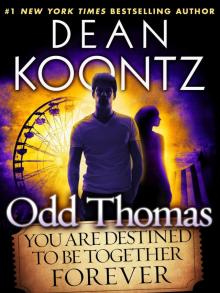 You Are Destined to Be Together Forever (Short Story)
You Are Destined to Be Together Forever (Short Story) The Moonlit Mind (Novella): A Tale of Suspense
The Moonlit Mind (Novella): A Tale of Suspense Darkness Under the Sun
Darkness Under the Sun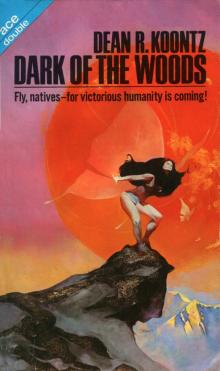 Dark Of The Woods
Dark Of The Woods Dean Koontz's Frankenstein
Dean Koontz's Frankenstein Frankenstein
Frankenstein The Face of Fear
The Face of Fear Children of the Storm
Children of the Storm Mr. Murder
Mr. Murder